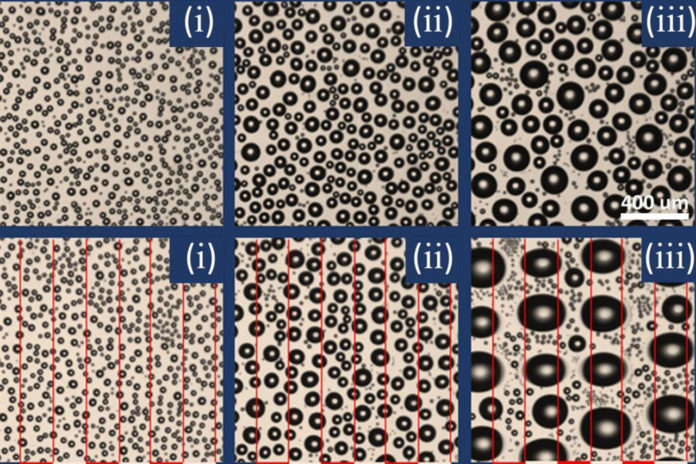In physics, the term breath figures is used to describe dropwise condensation patterns. The evolution of these patterns is only possible by applying a thin water-repellent coating that improves droplet mobility. But now scientists at the University of Twente suggest that it is also possible to actively influence the condensate droplets by embedding electrodes in the surface.
A new finding suggests that the evolution of these patterns and roll-off of droplets can be changed strongly under electric field effects ‘electrowetting’ – leading to higher heat transfer rates. Applying electric fields changes the ‘wetting state’ of the surface, known as electrowetting.
Under electrowetting, the evolution of condensation can be controlled. It’s all because the electric field influences the distribution and the size of the droplets. They merge faster, caused by the electric forces, and form bigger droplets in a shorter time. Furthermore, they move to become aligned with each other.
As they merge together, their net surface coverage is reduced compared to typical cases, leaving more ‘bare surface’ for further condensation.
Therefore, the breath figure undergoes a major transformation of properties like surface coverage, size distribution, and average radius. Furthermore, the droplets roll off faster on the surface. This increased mobility leads to more efficient heat transfer.
The research has been done in the Physics of Complex Fluids group of Prof Frieder Mugele, part of the MESA+ Institute for Nanotechnology of the University of Twente. It was supported by the Netherlands Organisation for Scientific Research (a division of Applied and Engineering Sciences) and the Vici programme.
The study is published in the Physical Review Letters.
